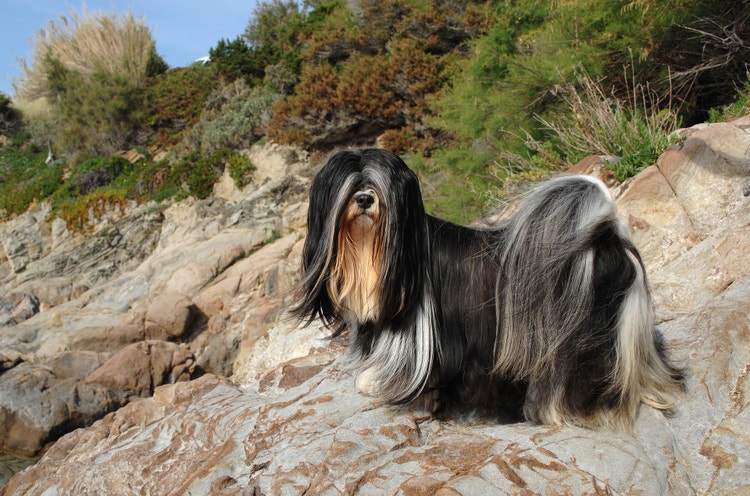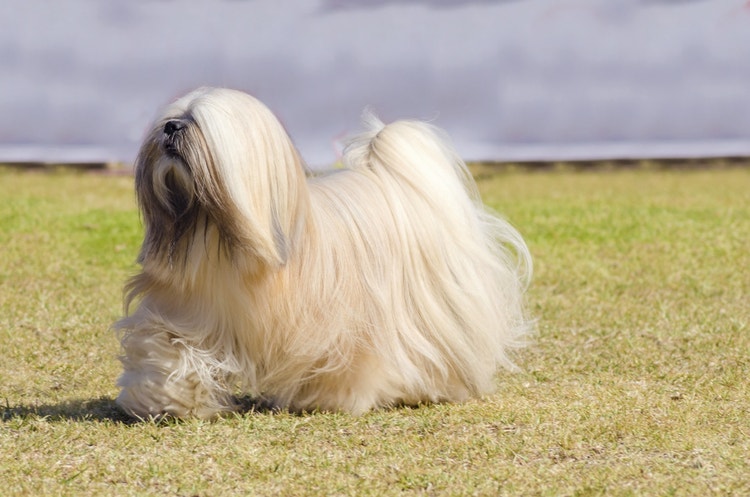

Lhasa Apso


Where Is the Lhasa Apso From?
Lhasa Apsos were kept in Buddhist monasteries in Tibet for both companionship and protection. Dalai Lamas would occasionally send pairs to royal families in China, as they were thought to bring good luck and success to those who owned them. The breed inspired much folklore, specifically a myth about a flying “Snow Lion” that made nests in the skies and birthed two Apsos: one with wings and one without. The Snow Lion laid the wingless Apso on Tibetan ground, creating the very first Lhasa Apso dog.
It was also thought that deceased monks were brought back as Lhasa Apsos and, likewise, when a Lhasa Apso dog died, they were brought back as a human child. With all the mythology and sanctity surrounding the breed, they were kept very close and isolated to Tibet for many centuries. It wasn’t until the 1930s that an American received a pair as gifts from the 13th Dalai Lama, establishing the breed in the United States for the first time. By 1935, the breed was registered with the American Kennel Club as part of the Terrier Group, but was ultimately transferred to the Non-Sporting Group in the 1950s.
Caring for a Lhasa Apso
What Kind of Diet Does a Lhasa Apso Need?
What Kind of Diet Does a Lhasa Apso Need?
A diet with higher fat and protein content is recommended for Lhasa Apsos to support their dense coat. However, overfeeding should be avoided, as this breed is prone to gastrointestinal distress.
How Much Grooming Does a Lhasa Apso Need?
How Much Grooming Does a Lhasa Apso Need?
The breed’s signature hair coat requires regular grooming to prevent matting.
Are Lhasa Apso's Healthy Dogs?
Are Lhasa Apso's Healthy Dogs?
The Lhasa Apso is a hearty and healthy dog breed, typically living for upwards of 14 years.
Sebaceous adenitis, a genetic disease that causes inflammation of the sebaceous glands in the skin, is a common health concern for the breed. This disease can result in dry, scaly skin and hair loss.
Lhasa Apsos are predisposed to: allergies, sebaceous adenitis, cherry eye, dry eye, retinal atrophy, inherited renal dysplasia, and patellar luxation.
How Much Training Does a Lhasa Apso Need?
How Much Training Does a Lhasa Apso Need?
The Lhasa Apso is an independent, intelligent, and often stubborn breed that benefits from early and consistent obedience training. A significant amount of human interaction and socialization is recommended during their formative years.
How Much Exercise Does a Lhasa Apso Need?
How Much Exercise Does a Lhasa Apso Need?
Lhasa Apsos have moderate exercise requirements. Regular walks during the day and light play at night are sufficient for daily activity.
What Are the Physical Characteristics of a Lhasa Apso?
Lhasa Apso Facts
Other Breeds to Explore
References
- American Kennel Club. The Complete Dog Book. Random House Digital, Inc., 2006.
- Morris, Desmond. Dogs: The Ultimate Dictionary of Over 1,000 Dog Breeds. Trafalgar Square, 2002.
- 8 Things You Didn’t Know About the Lhasa Apso. American Kennel Club, 2021.


